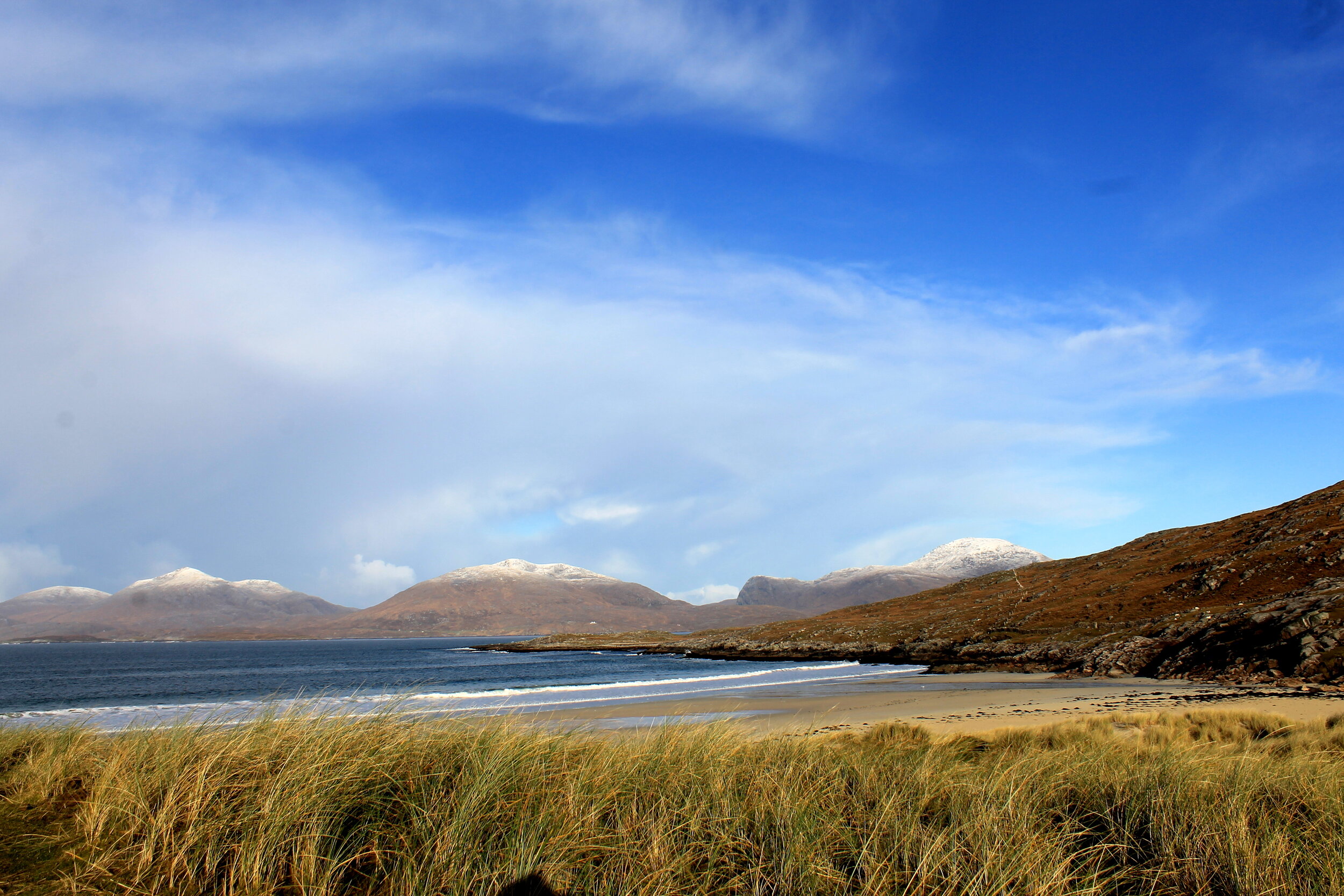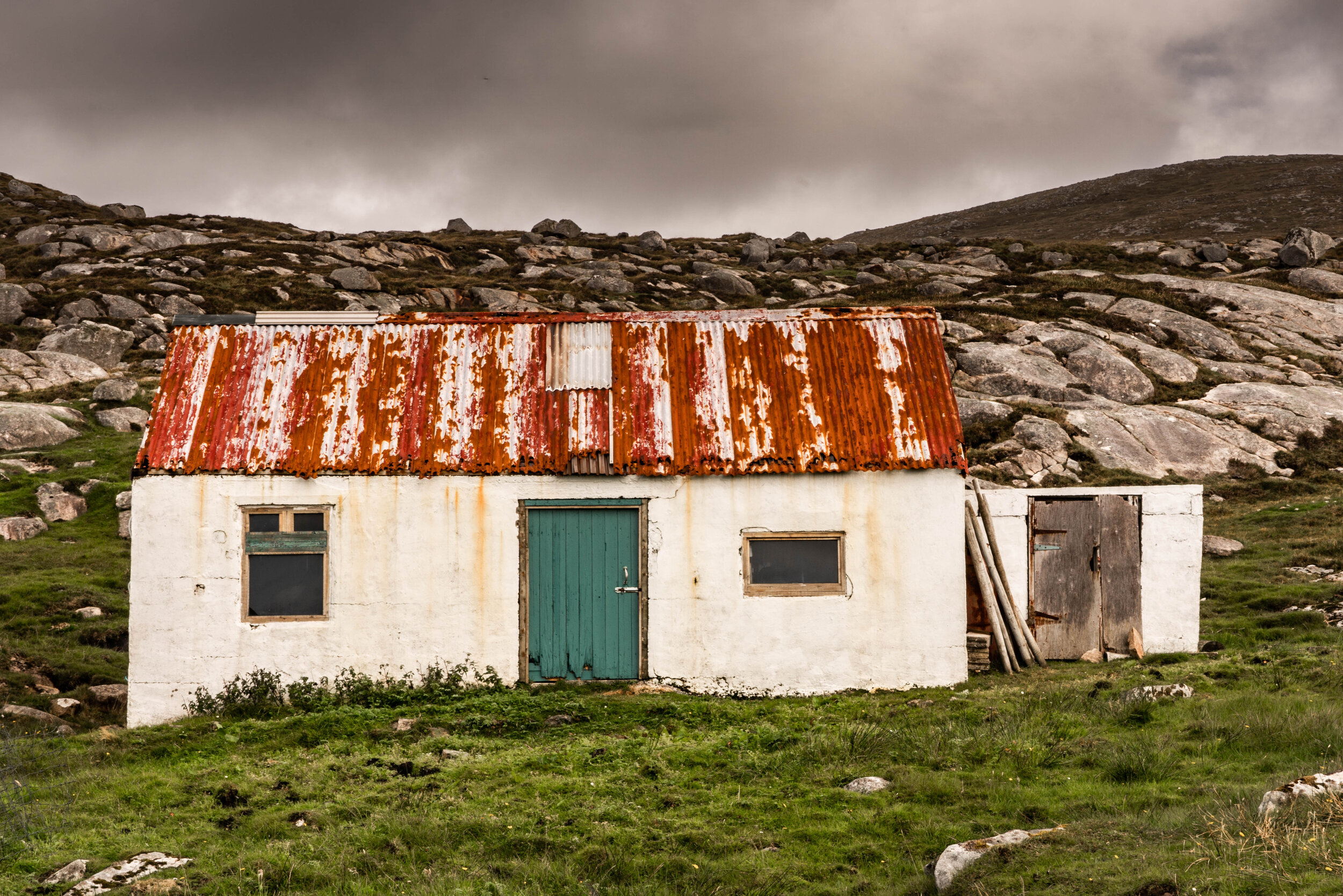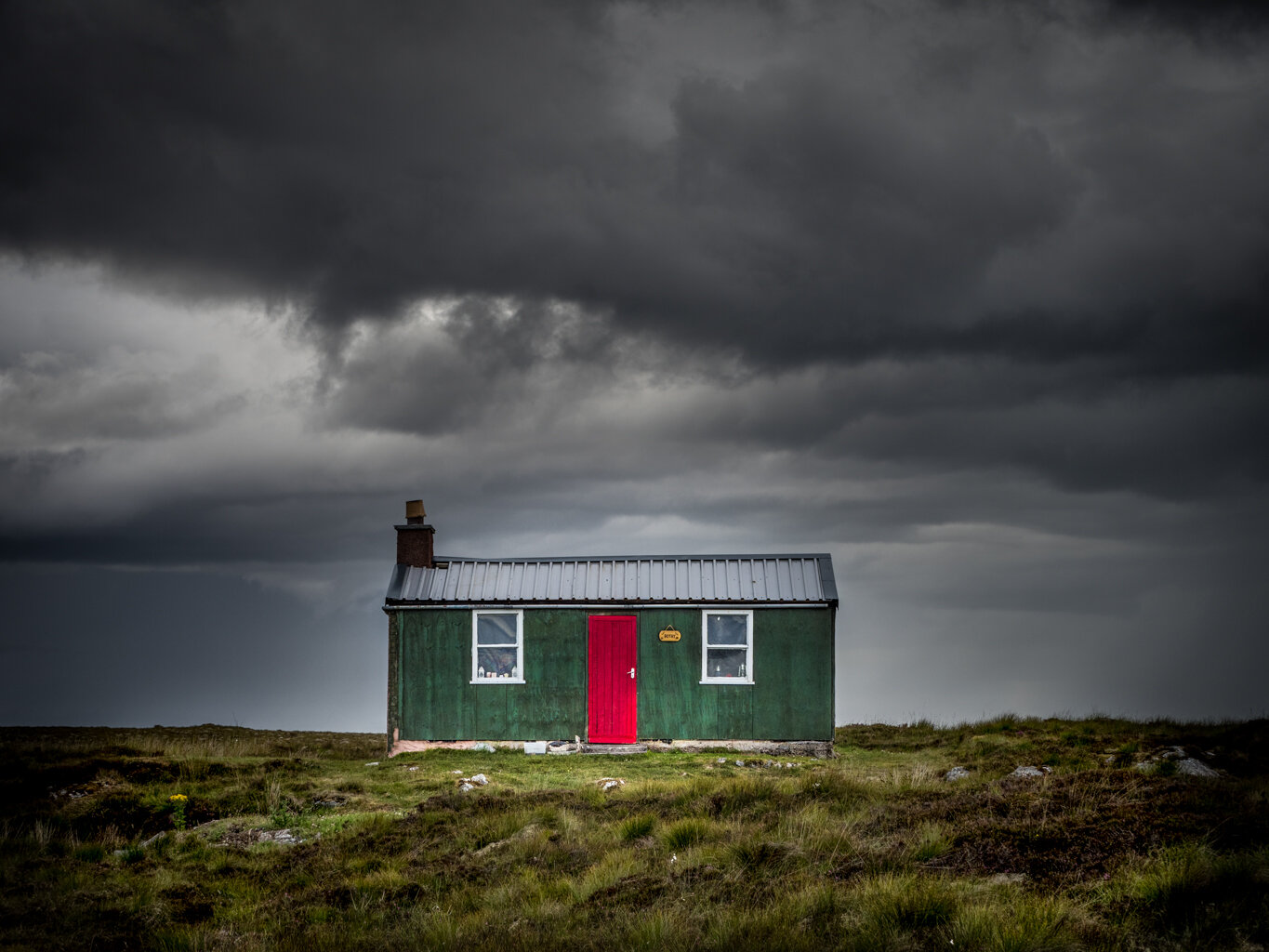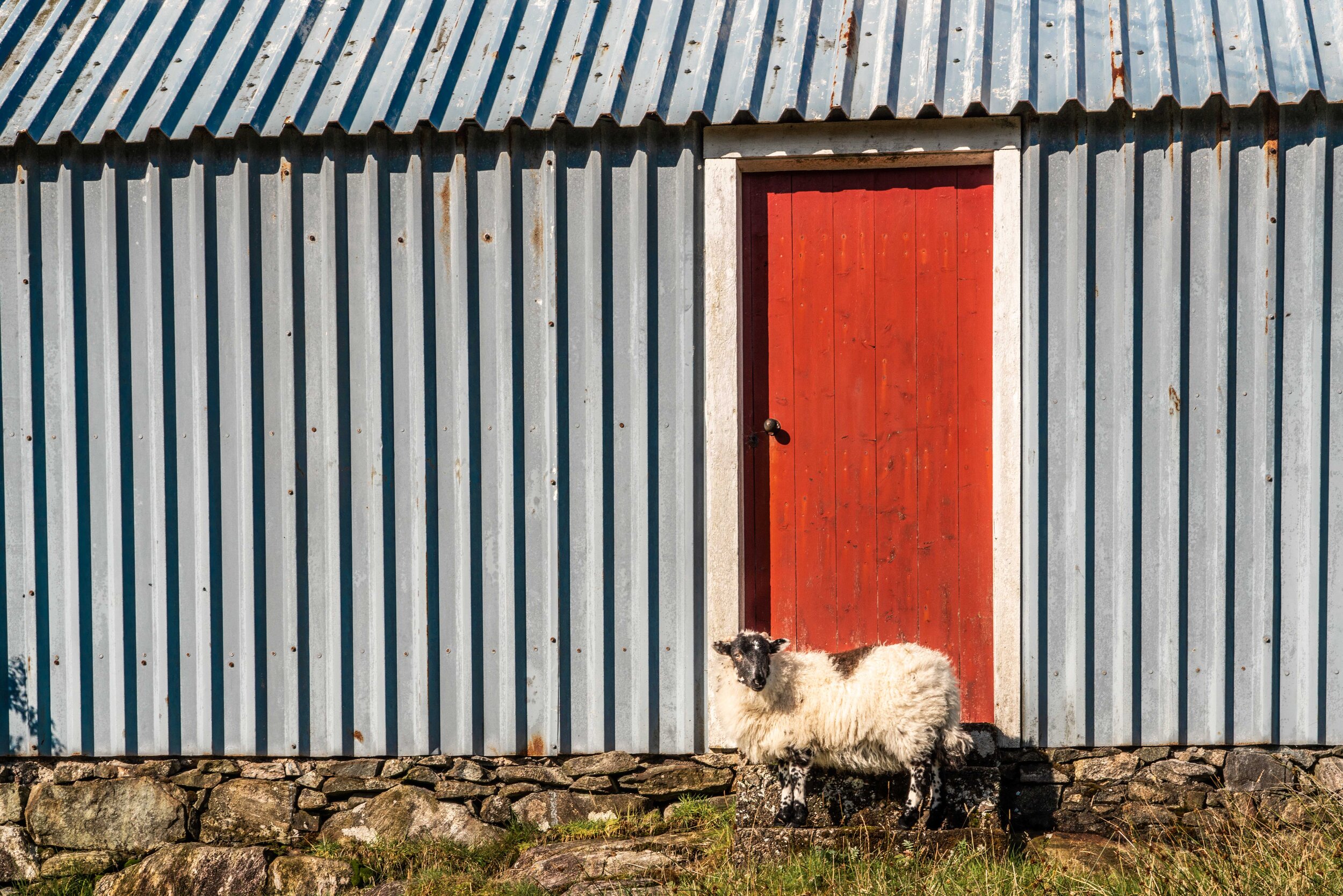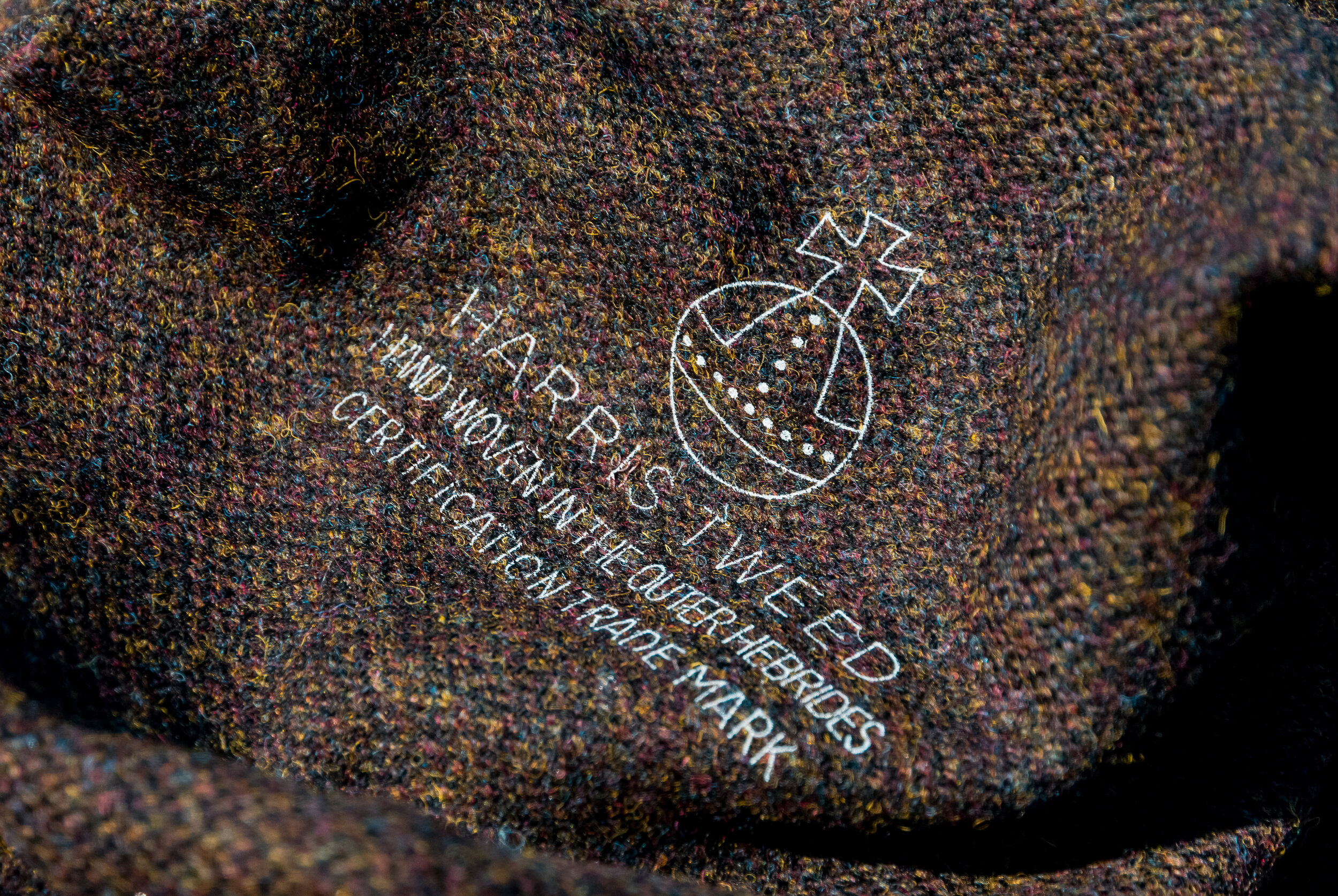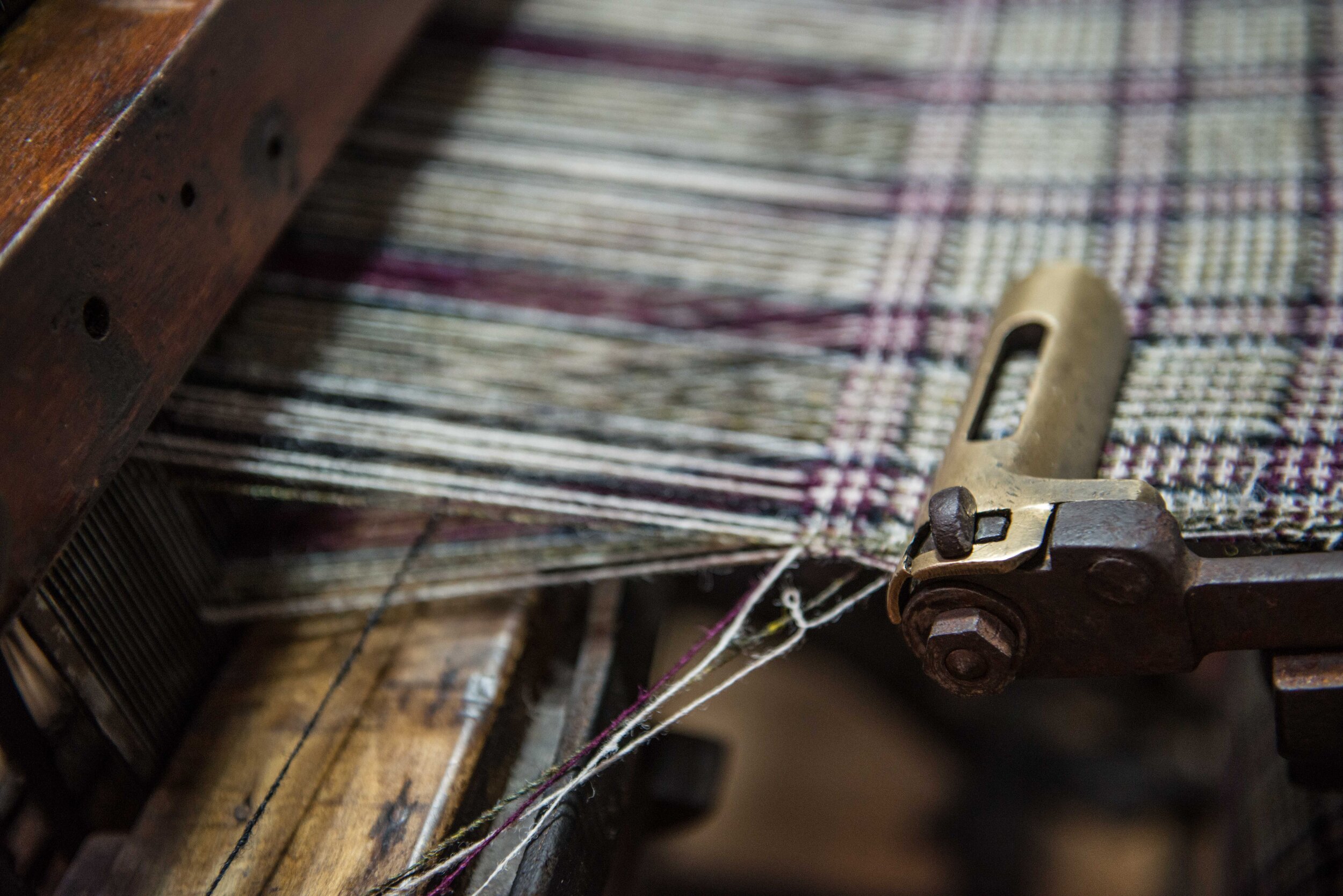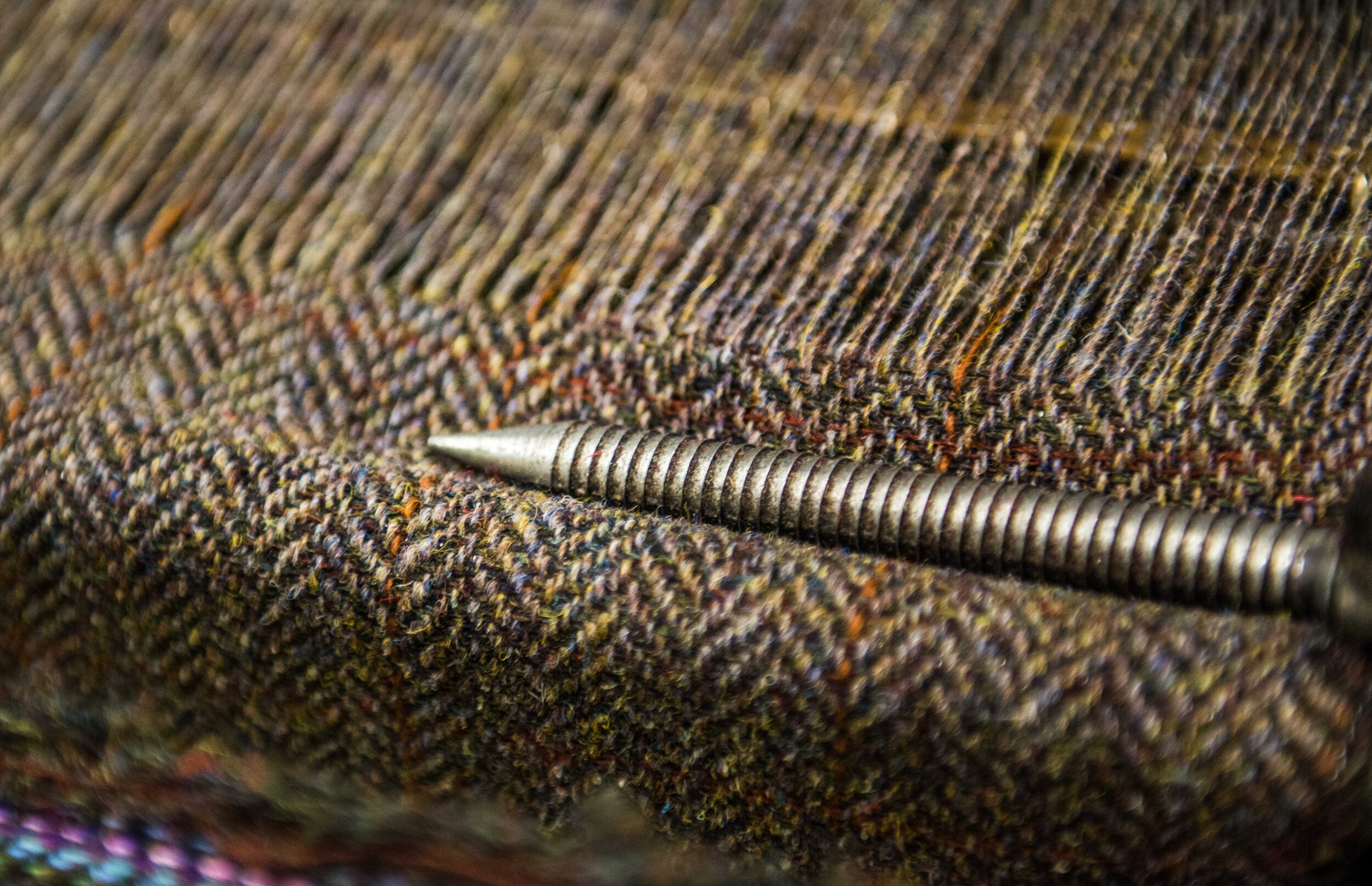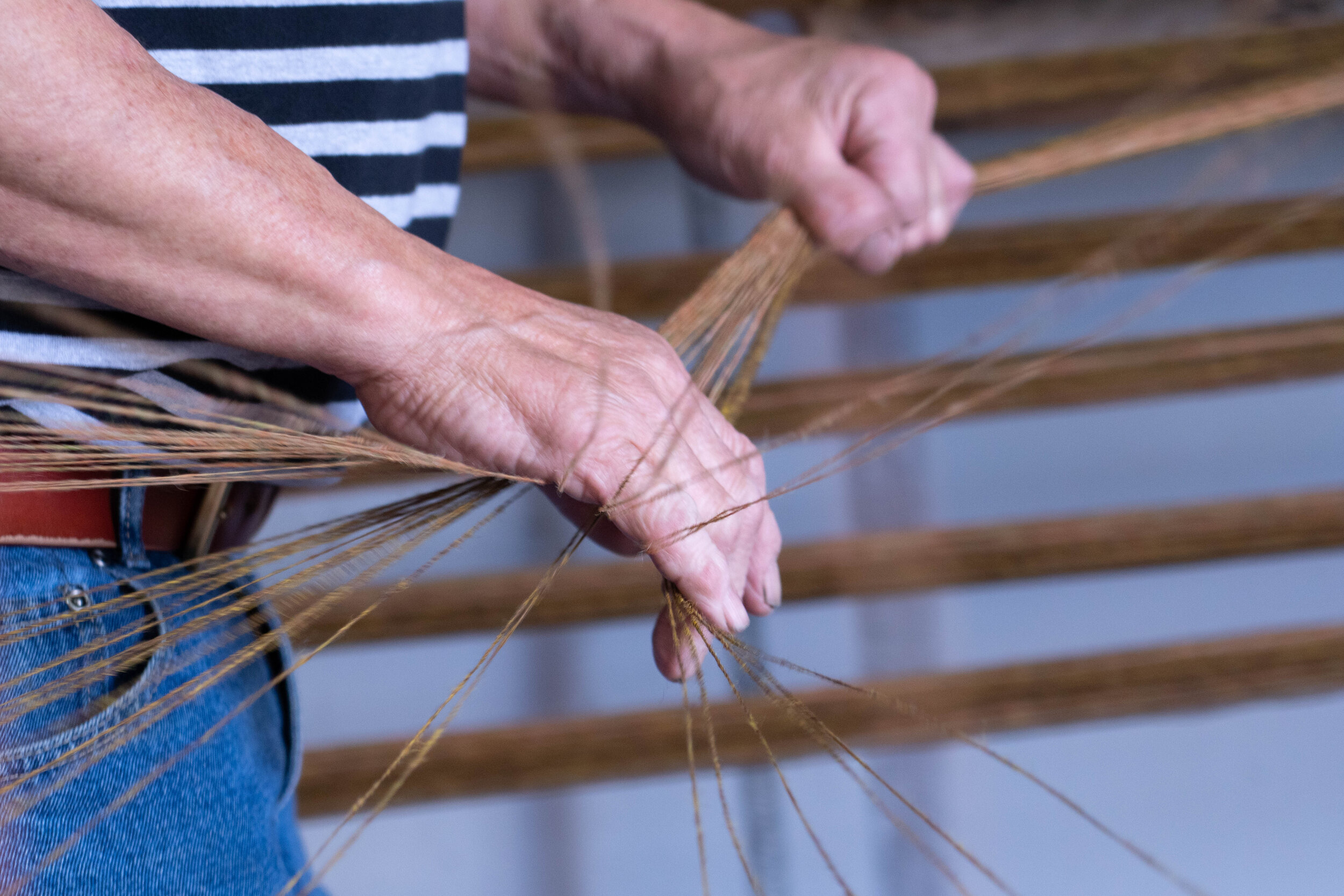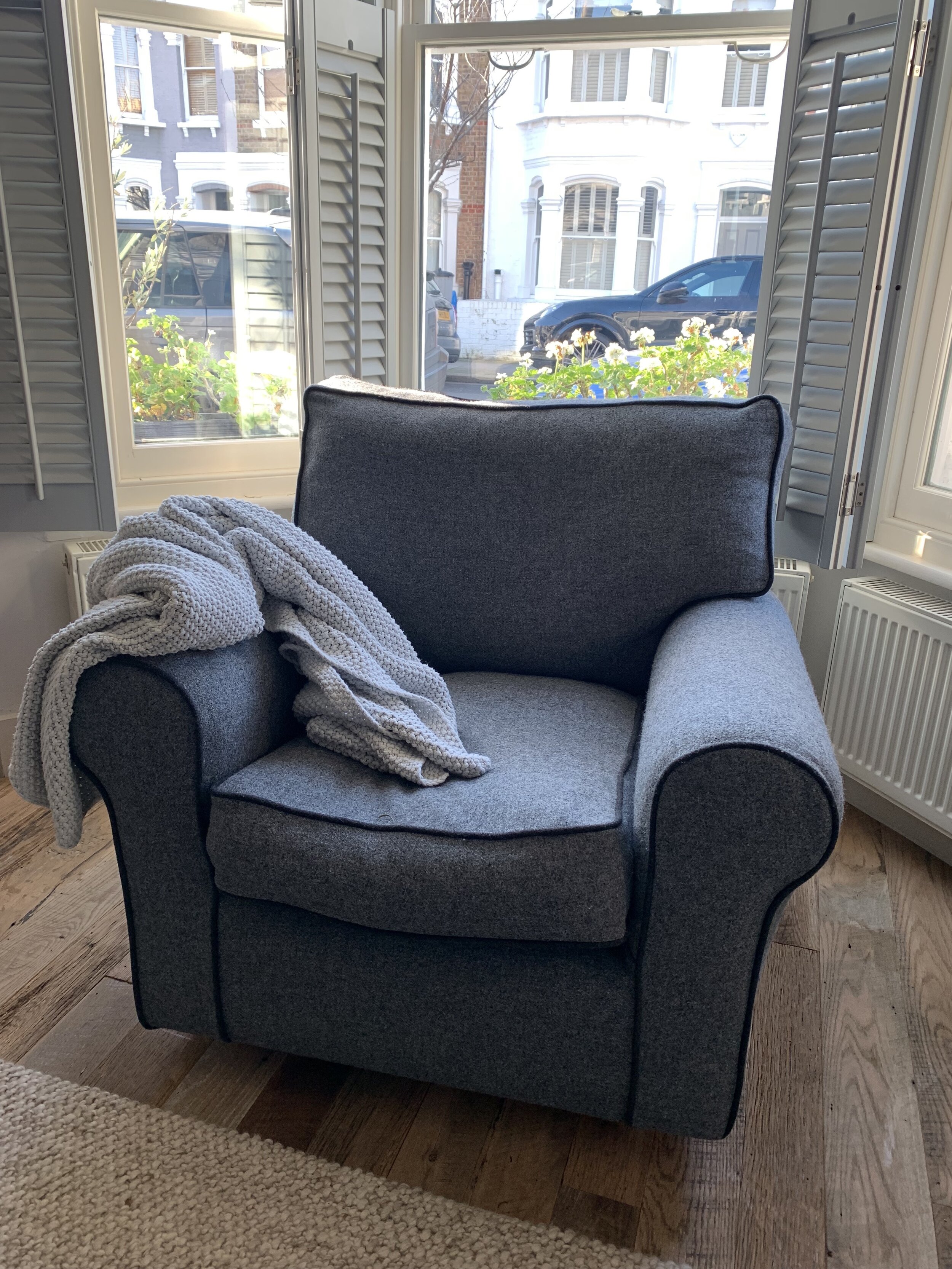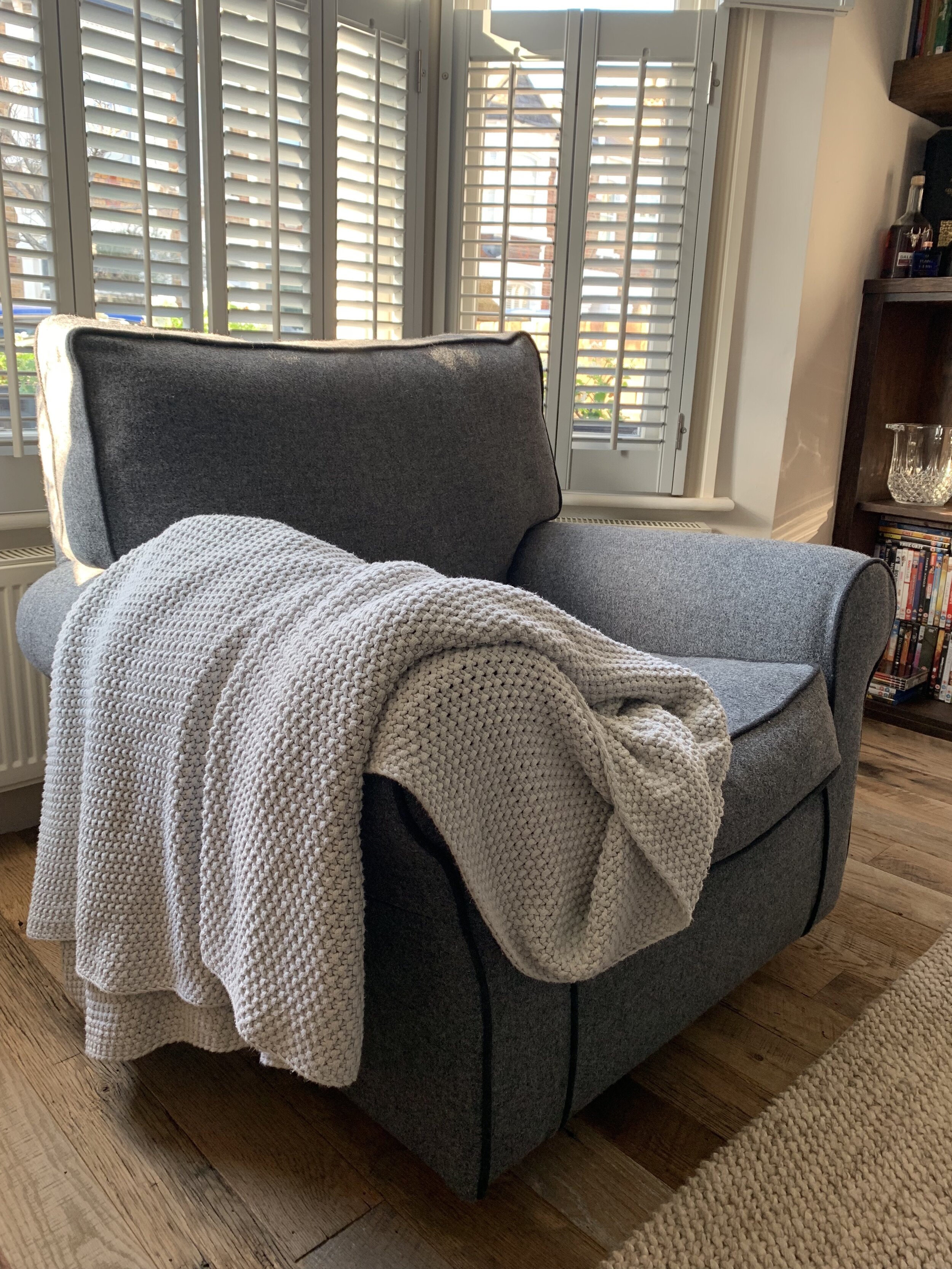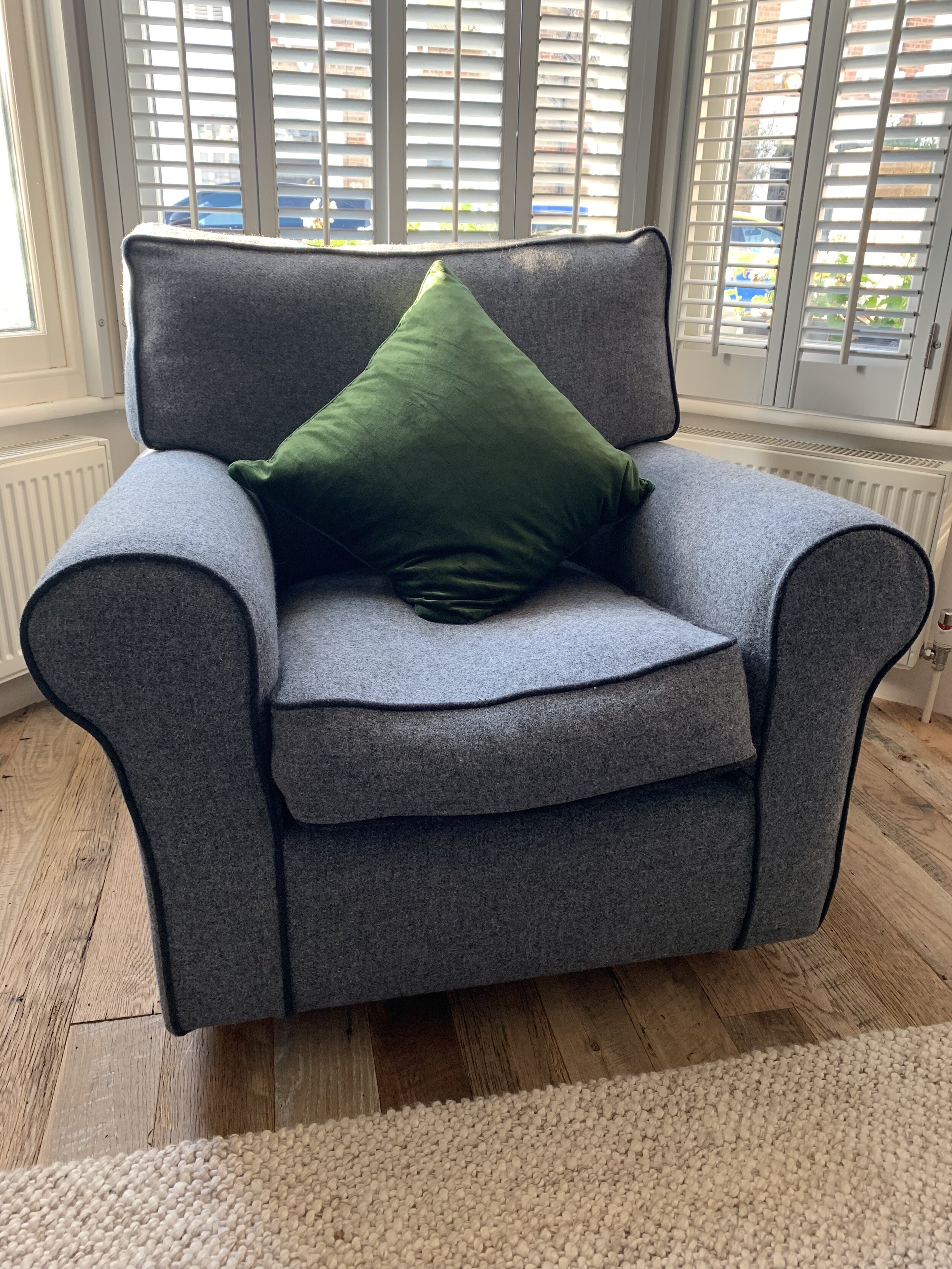Venturing North To The Isle Of Harris
The story of a simple upholstery project that led me on an unexpected adventure to the Outer Hebrides to discover the secrets of Harris Tweed®
Nesting, rearranging, ‘putting my stamp on’, whatever you wish to call it, making a house feel like home is something I have always felt instinctively compelled to do. Through my twenties I irritated long-suffering flatmates by cramming precious inches of shared shelf space with well-thumbed Agatha Christie novels and filling otherwise airy corners with over-reaching houseplants.
Now into my thirties and newly married, I have left behind the confines of my beloved terraced flat, for a house, and all the comforts that affords, including a delicious roll-top bath and a staircase.
Marital bliss aside, there are times, even now, that I think fondly on those woodchipped walls and draughty sash windows. So, in an attempt to make myself feel more at home, and not mourn my former life, I threw myself wholeheartedly into redecorating and revamping (renovating is for Americans) our new house.
How it began
With the aim of preserving anything that my mother would deem ‘perfectly good’, I set about gently, avoiding buying surplus new items, or when something really was needed, trying where possible to bring in British-made pieces that would last a decade at the least.
Mindful of budget and finding my design feet, my first overhaul was a forlorn armchair that had stood alone in a bay window for a decade. Peeling back the tweed rug purposefully draped over it, I remembered its striped, 70’s corduroy-style and realised rescuing this sad but terribly comfortable chair had to be my starting point.
Taking inspiration from that handsome tweed rug, I embarked on finding some British-made wool, and began researching producers who sold direct. I wanted this forlorn piece to become the kind of chair that cats make a beeline for and visitors ogle with envy. My search led me north, to a wonderful Scottish weaver named Rebecca Hutton and the fascinating story of Harris Tweed®.
All Harris photographs courtesy of Jane H Macmillan
Far, far north
Hailing from the highest point in the British Isles, Harris is known for its sandy beaches of Luskentyre and Scarista on the west coast, and the rugged mountains in the north. To the east lie the Bays, an area of miniature fjords and in the 16th century church of St. Clement’s in Rodel lie richly-carved tombs.
As well as this, the island is the original home of a luxury handwoven cloth, that has become a fiercely-guarded part of Hebridean life and stalwart of Scotland’s history for over a century.
A chequered history
This story of impressive skill and enduring dedication began in 1844 when Lord Dunmore, owner of the Isle of Harris estate commissioned the Clan Murray tartan, worn by his game keepers and ghillies, to be woven by locals weavers. Demand was such that his wife, Lady Dunmore, devoted herself to marketing the tweed on behalf of the islanders, selling to merchants and well-connected friends across the country.
By the 1960s, an estimated 7.6 million yards of Harris Tweed® was being produced per year, and officials ruled that only cloth woven by islanders within the Outer Hebrides could carry the name. Stamping the finished tweed with the familiar orb symbol began in 1911, and continues today.
As a further safeguard, an Act of Parliament was passed in 1993, stating that every aspect of the cloth-making, from weaving, dyeing and blending, to finishing and stamping, must be carried out on the islands.
Harris Tweed photographs courtesy of Jane H Macmillan
The weaver
Weaving on a Hattersely Mark 2 loom, which arrived on the island in the late seventies, Rebecca works from her home in the village of Northton, in South Harris, complying with the regulation which states that all cloth must be made at the weaver's own home or croft. ‘The loom sat in a crate in the corner of a mill for 30 years until I first used it’ she tells me.
Treadle-operated, with a shuttle, the pirns on the Mark 2 are made by a winder. Much-like mini bobbins, the pirns sit in the shuttles, delivering the yarn for the weft back and forth on the loom. I am amazed to learn that Hattersley stopped making these in the 1980s.
With fabric shops now a rare sight on the British high street, and a seemingly endless offering available to order online, it is heartening to learn that there remains a market is for handwoven British tweed.
Unique quality
Speaking with Jane MacMillan at the Harris Tweed Authority, I learn that the mid-2000s were a tough time, with global markets conditions seeing a slump in production. Thankfully though, it was this testing time that saw vital investment and initiative in the industry, and today over 500 islanders are employed in the production Harris Tweed® today.
It is the quality that really sets it apart, Rebecca informs me. ‘Being made from 100% wool, it is a very durable cloth that is naturally stain and water resistant, as well as flame-retardant’. An appealing choice for fireside upholstery, I note.
Talking to Rebecca, the notion of legacy within the industry is profound. ‘Whether you're a weaver, mill worker or a customer buying a piece of the tweed, the sense of history and belonging to a century-old tradition is palpable.’
Many people inherit a piece made from Harris Tweed® which could be fifty years old, Rebecca tells me, but unlike machine-made fabrics hailing from factories thousands of miles overseas, the quality of the real stuff is guaranteed to endure. In short, it seems highly unlikely a piece of this will ever end up in landfill, which is a cheerful thought.
As we discuss colours and samples for my armchair, I proudly tell Rebecca of my Grandmother’s rug that brought me here, and numerous recollections of sprawling across it whilst delving into a picnic basket, or hanging it between branches to create a shady den. I am not alone it seems, ‘Customers like to continue being a part of that history’, she smiles, and describes how visitors or customers telephone seeking a particular tweed for pair of breeches to accompany an heirloom shooting jacket, or find a stylish baker boy cap to gift a younger generation.
A sense of belonging
Whilst the sense of space and rugged scenery entices visitors to the Outer Hebrides each year, for Rebecca it's not merely the (incredible) views, but the place itself that holds the magic. ‘This land has supported - and continues to support - the crofters today. To hear the sea crashing onto the rocks during a gale, or watch the northern lights dancing across the night sky makes me feel close to the people who have gone before me.’
I am reminded of the power of the ever-changing weather when Rebecca warns me there might be a delay with the samples she is sending; due to gale force winds affecting vital ferry crossings. Yet the idea of being at the mercy of the elements and living with the realities of nature is so far from my urban life to make me envious, especially when I remember that its proximity to the Arctic Circle means the skies over Harris never go fully dark during the summer months. ‘There's certainly something about being an islander that's within you’ she muses, ‘it increases that sense of belonging.’
With the help of some beautiful tweed and the skilled workmanship of a local upholsterer named Simon Greenham, the armchair now stands as a proud centrepiece, reupholstered in a rugged grey-flecked tweed, finessed by some handsome charcoal piping. Knowing where its luxury wool hails from, and, more still, the person who wove it, has allowed me a rare and privileged insight into a time-honoured tradition and a history I would never otherwise have known.
Sometimes, on a wet afternoon, curling up against the chair’s sturdy frame with one of those well-thumbed whodunnits, I can almost hear the distant rattle of a loom, as the windows rattle against another hoolie blowing outside, and I feel invisibly connected to the untamed magic of those wild islands.



